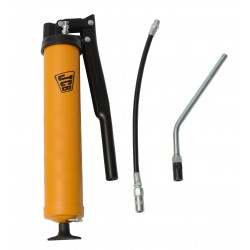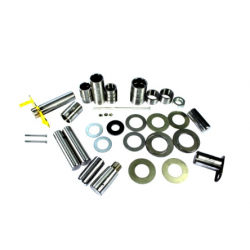No products
a zamówienie wyślemy tego samego dnia!
- Cab Glass
- Pins / Bushings
- Tooth Buckets
- Filters / Oils / Lubricants
- Slides
- Braking system
- Suspension System
- Fuel System
- Electrical Sub-assemblies
- Meters / Indicators
- Fuses
- Coils / Electrovalves / Solenoids
- Pressure Sensors
- Stop Switches
- Stop Sensors
- Temperature Sensors
- Proximity Sensors
- Lamps / Lens / Rotating Beacons
- Driving Switch / Light Switch / Forward & Reverse Switches
- Cabin Switches
- Driving Mode Switch
- Relays
- Ignitions
- Fuel Level Sensor
- Akumulatory
- Alternators
- Hydraulic System
- Frame elements / Rotation Elements / Arms
- Body Elements
- Gear Box Sub-Assemblies
- Cooling System
- Exhaust System
- Engine Sub-Assemblies
- Attachments
- Accessories
- Sale
- Silnik
Sample blog post
Advice from mechanics - general principles of the instruction from construction equipment.
The basis for long trouble-free operation of a construction machine is care for its technical condition and compliance with the principles of operating the equipment.
One of the basic principles is the daily review consisting of visual verification, which includes:
1. checking the condition of the tires (for visible cracks, adequate pressure and tread condition).
2. Check the steering (rod ends and switches).
3. Check for leaks
a. cylinders, especially on piston rods,
b. on hydraulic lines,
c. on distributors,
d. transmission, especially outputs to drive shafts,
e. engine and fuel system tightness,
f. and check for leaks on the front and rear bridges.
One of the most important things is checking the oil levels in the engine, transmission and hydraulic system. Failure to do so may result in serious breakdowns, e.g. a low transmission oil level means that the machine runs slower and is weak and a large loss of "hydraulics" means that it has no power and exposes the hydraulic pump to seizing.
It is important to check the machine for mechanical damage, whether there are no visible cracks, e.g. excavator arms, it is also about the safety of people working near the machine.
After starting the machine, check the operation of all functions (forward / reverse travel, hydraulic brakes, parking brake, all arm movements, sound signals (safety) lighting and wipers, etc.
After finishing work, the machine should be greased at all lubrication points (with appropriate grease, preferably with molybdenum added).
If it is possible to wash the machine, it is easier to see all kinds of leaks and damage, especially supports, old mud, clay, cement and stones that get into them can seriously damage and even block them.
Finally, we secure the machine, i.e. we don't leave any arms up and pull the handbrake.
A very important thing before starting work is to get acquainted with the machine's DTR. The point is to learn its technical and practical capabilities (to use it for work in accordance with its intended purpose and manufacturer's instructions. The DTR-ka contains practical tips on the possibilities and scope of machine operation. A lot of construction machinery comes from the "second hand", not every machine contains start-up and technical documentation, therefore you should adhere to the general principles of using the equipment.
It is extremely important to maintain order in the operator's cab. Containers with oils and other "needed" items should not be stored there. From this there are special storage spaces located in the machine. This is particularly important for safety, loose objects being able to move freely can block the gas pedal and, what's worse, brake and oil bottles are a fire hazard.
Also important is the proper behavior during machine failure. Depending on the type of fault-failure, appropriate measures must be taken. If possible, the machine should be moved to a non-colliding and unobstructed place on the construction site and where it can remain until repaired. In this case, you should proceed to verify the fault and if you can remove it yourself, contact the supplier of spare parts yourself and remove the fault. If you don't call a mechanic.








Zostaw komentarz